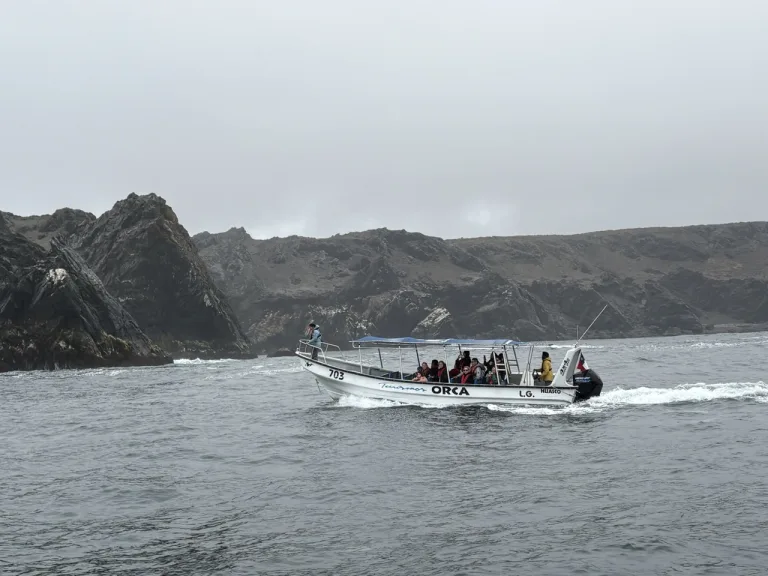The Coolest Atacama Desert Wildlife (& Where to Spot Them!)
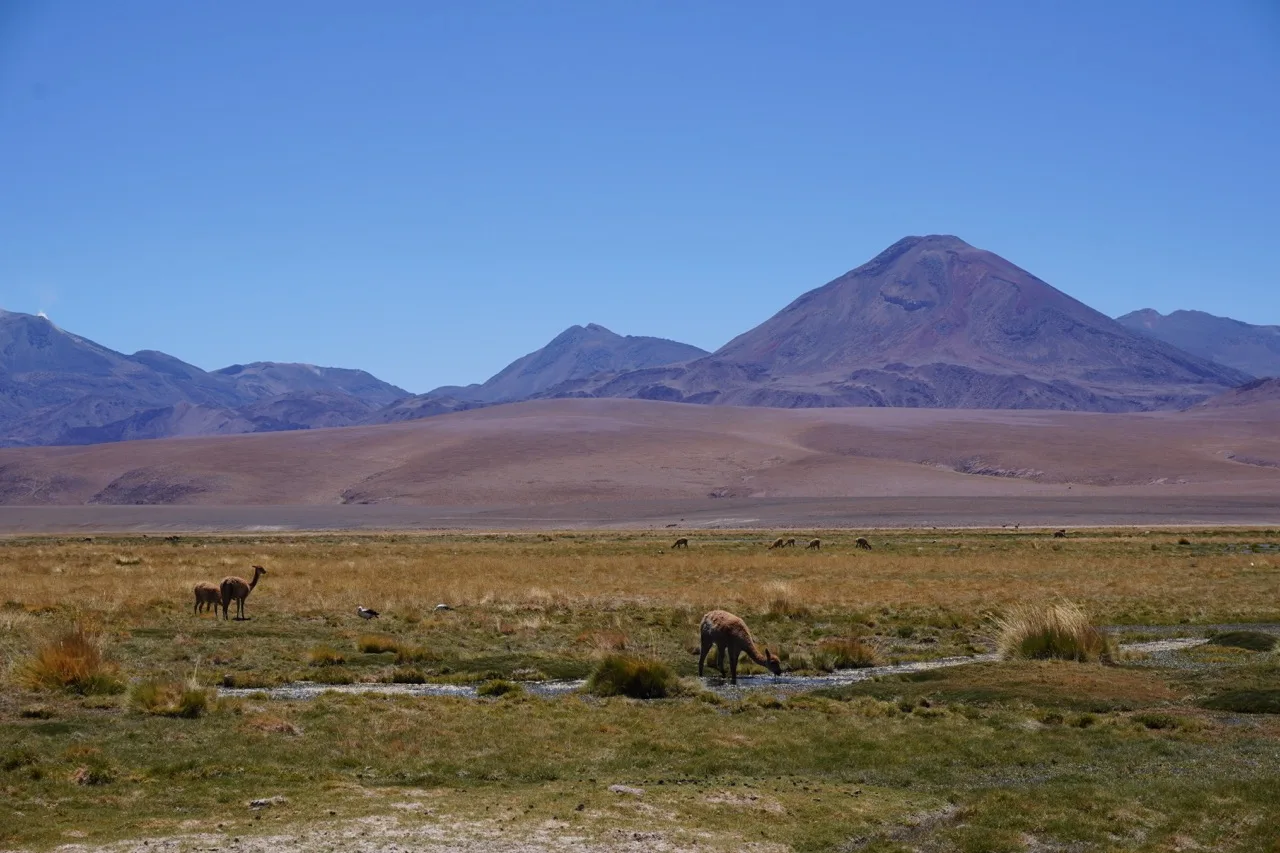
I never expected the Atacama, the driest place on Earth, to be a wildlife destination. During my 7-day Atacama trip, I thought the highlights would be endless salt flats and surreal landscapes.
However, as soon as I started driving to San Pedro, my heart started melting as I casually came across tons of wildlife (more than I’ve seen in tropical jungles!)
Then the whole trip suddenly felt like an epic DIY Atacama Desert safari, so I started digging into what animals live in the Atacama, and exactly where to find them.
Here’s everything I learned about Atacama Desert wildlife (and the animals I actually managed to spot!)
TL;DR: the coolest animals to spot in the Atacama Desert (top spots to see them)
🦙 Vicuña & Guanaco (multiple sightings on the main roads)
🦊 Chilla & Culpeo (rocky areas, Chañaral Island Tour from La Serena)
🐭 Viscacha (Puritama Area, El Tatio Geysers)
🦩 Flamingos (Laguna Los Flamencos and Laguna Chaxa Park)
🪶 Ñandú (open plains)
Mammals of the Atacama
1. Vicuña

📍 Where to See: High-altitude grasslands around San Pedro de Atacama
🗓️ Best Time: Year-round, most active during mornings
🍀 Difficulty: Easy
A more delicate cousin of the llama, vicuñas are smaller and much more elegant. They are one of the most famous animals of the Atacama Desert (and also one of the easiest to spot!)
From the Atacama roads, you can usually see them grazing in high-altitude grasslands. They are so abundant that you’ll likely see them multiple times while driving from San Pedro to the top attractions of the Atacama.
Think of them as the Atacama equivalent of deer in the United States, so always be alert when driving.
2. Guanaco
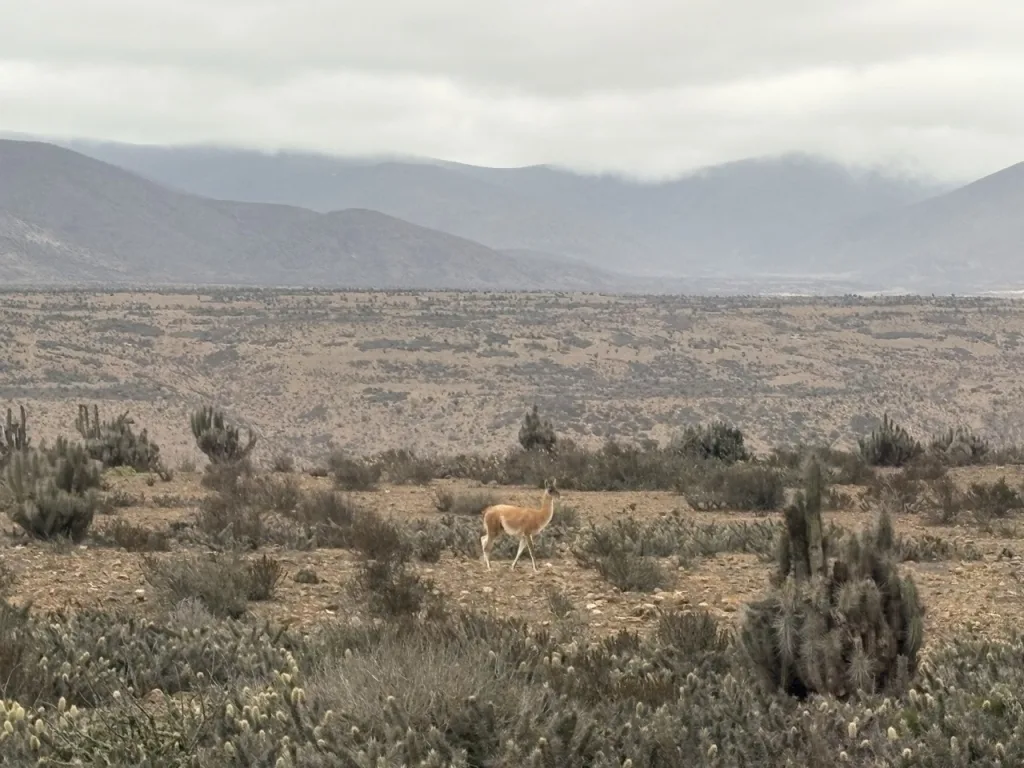
📍 Where to See: Valleys and open plains (I spotted it in Los Choros during the Chañaral Island tour!)
🗓️ Best Time: Year-round, most active during mornings
🍀 Difficulty: Easy
Larger and a bit more robust than vicuñas, guanacos are also related to llamas.
Guanacos have a blackish fur on their face that make it easy to differentiate them from Vicuñas.
It is common to spot them from the Atacama roads, so keep an eye out. My coolest Guanaco sighting was during the Chañaral Island tour from La Serena!
3. South American Grey Fox (AKA Chilla)
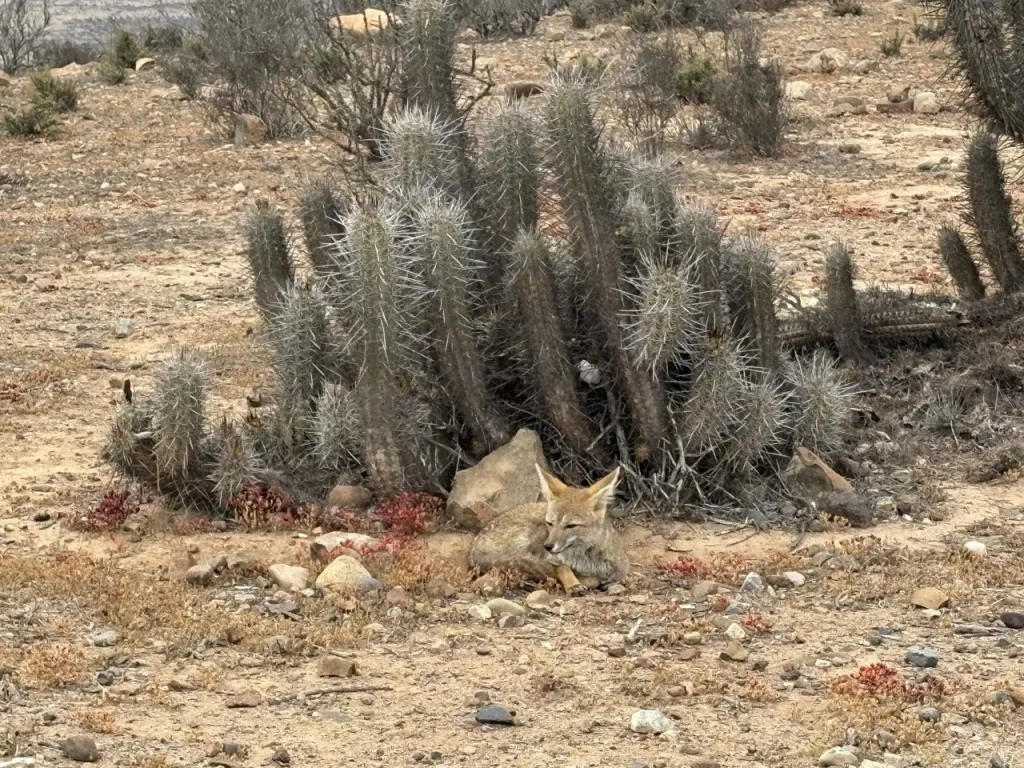
📍 Where to See: Rocky areas, outskirts of settlements (I spotted it in Los Chorors during the Chañaral Island tour!)
🗓️ Best Time: Year-round, most active at dawn & dusk
🍀 Difficulty: Medium
This little fox is surprisingly common in the desert but tricky to spot because it’s mostly active at dawn and dusk.
Also, they are rather small and perfectly camouflaged in the Atacama landscape. I probably wouldn’t have spotted any without the Chañaral Island tour‘s guide pointing them out.
Seeing them is a really cool experience as the way they move is incredibly sly and elegant.
4. Andean Fox (AKA Culpeo Fox)

📍 Where to See: Open plains and rocky slopes
🗓️ Best Time: Year-round, most active during dawn & dusk
🍀 Difficulty: Medium
Bigger than the grey fox, the Andean fox is a bit more confident around humans, though it will still keep its distance.
They’re usually found in open plains and near rocky areas, though I didn’t manage to spot any during my trip to the Atacama.
5. Viscacha
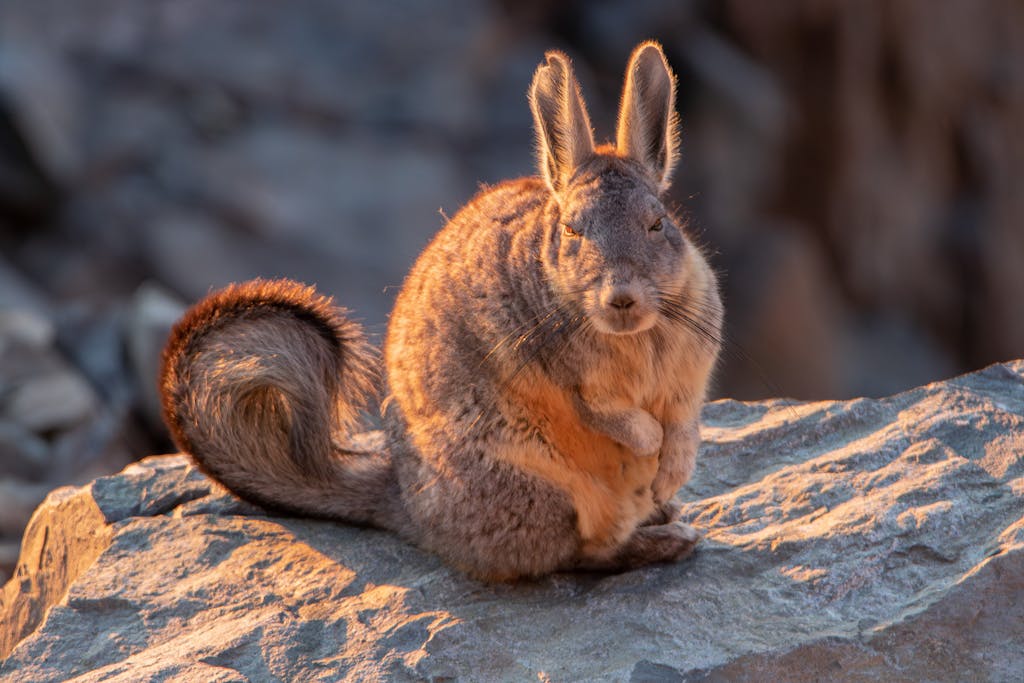
📍 Where to See: Rocky outcrops, desert hills
🗓️ Best Time: Year-round, sunbathing on rocks during the daytime
🍀 Difficulty: Medium
These desert rodents might remind you of rabbits, but they’re more like giant chinchillas, and they might just be the cutest and coziest animals that live in the Atacama Desert!
Viscachas love to sunbathe on rocks, and can often be seen in groups. I didn’t casually spot any during my trip, but they’re known to be spotted in:
- Puritama River path in Guatín (I regretted not looking for then when swimming in Termas de Purilibre)
- El Tatio Geysers
Viscachas are very abundant in the Atacama, and what makes it hard to spot them is how well they camouflage in the rocky environments they enjoy.
Large Birds & Ground Birds of the Atacama
6. Chilean Flamingo
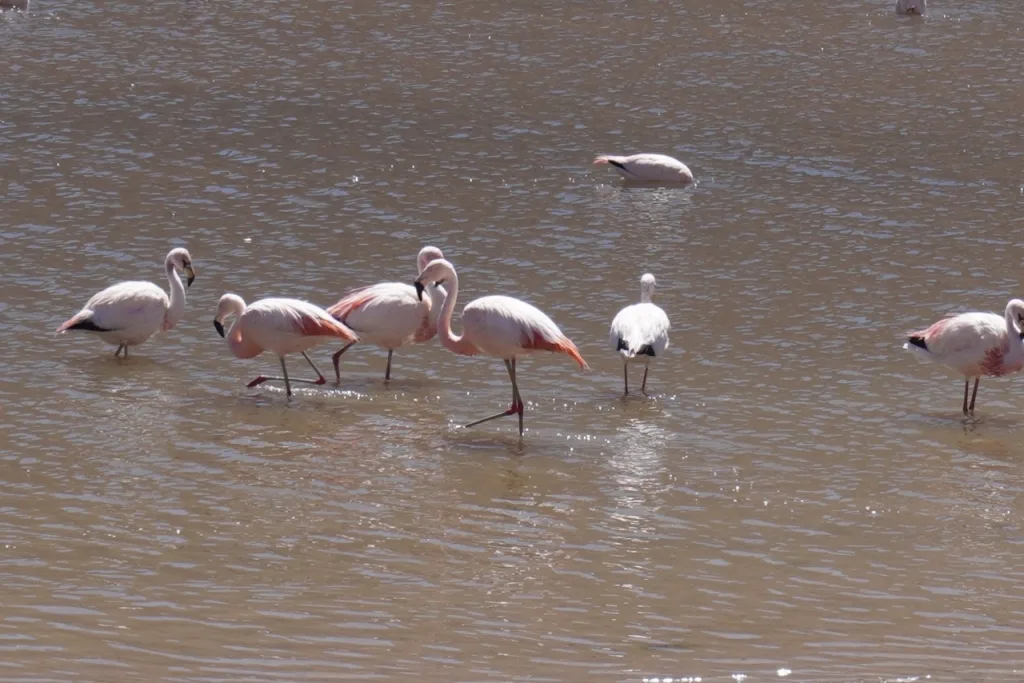
📍 Where to See: High-altitude lagoons (I had success spotting them in Laguna Los Flamencos and Laguna Chaxa Park)
🗓️ Best Time: November–March
🍀 Difficulty: Easy
Flamingos are one of the classic animals of the Atacama Desert, and the bright pink Chilean flamingos are common in high-altitude lagoons.
They spend hours feeding in shallow waters, so spotting them is relatively easy during the peak season, which goes from November to March.
I had great success spotting dozens of them for free at Laguna Los Flamencos. I also saw many during a tour to Laguna Chaxa Park, where a local guide gave us a little lecture filled with fun facts about the flamingos!
7. Andean Flamingo
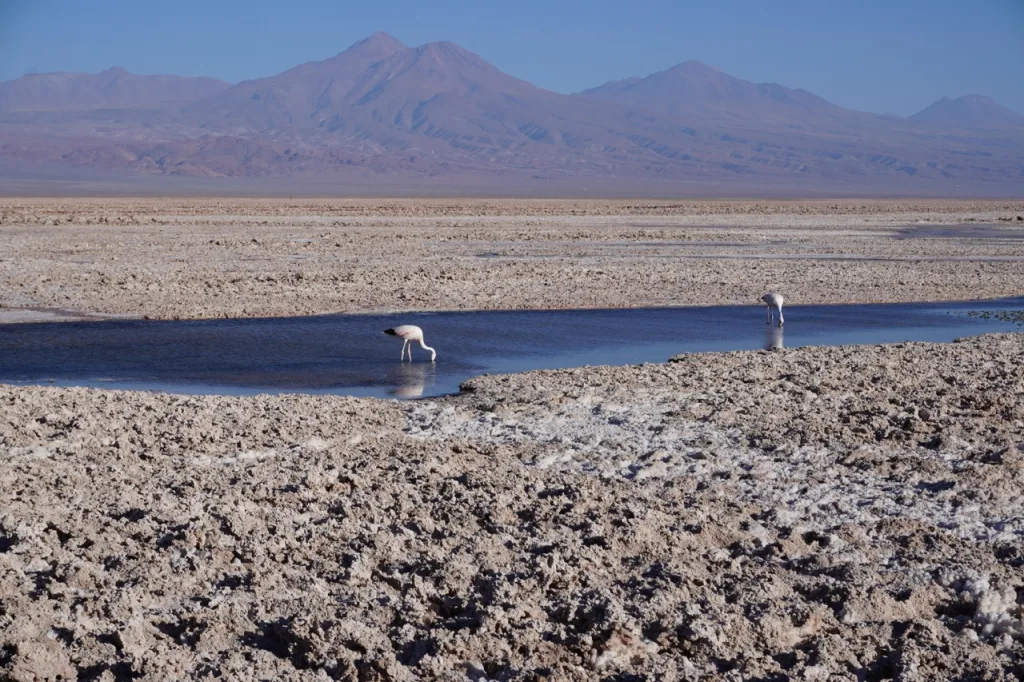
📍 Where to See: Salt flats and lagoons (I had success spotting them in Laguna Los Flamencos and Laguna Chaxa Park)
🗓️ Best Time: November–March
🍀 Difficulty: Easy
Slightly rarer and paler than the Chilean flamingo, these birds are one of the true Atacama Desert wildlife highlights.
You’ll find them in isolated salt flats and lagoons, often mixed with Chilean flamingos.
At Laguna Chaxa Park, I got to see many of them. Some were even flying overhead during sunset, which was a huge surprise as I had no idea that flamingos could fly so high!
8. Lesser Rhea (AKA Ñandú)
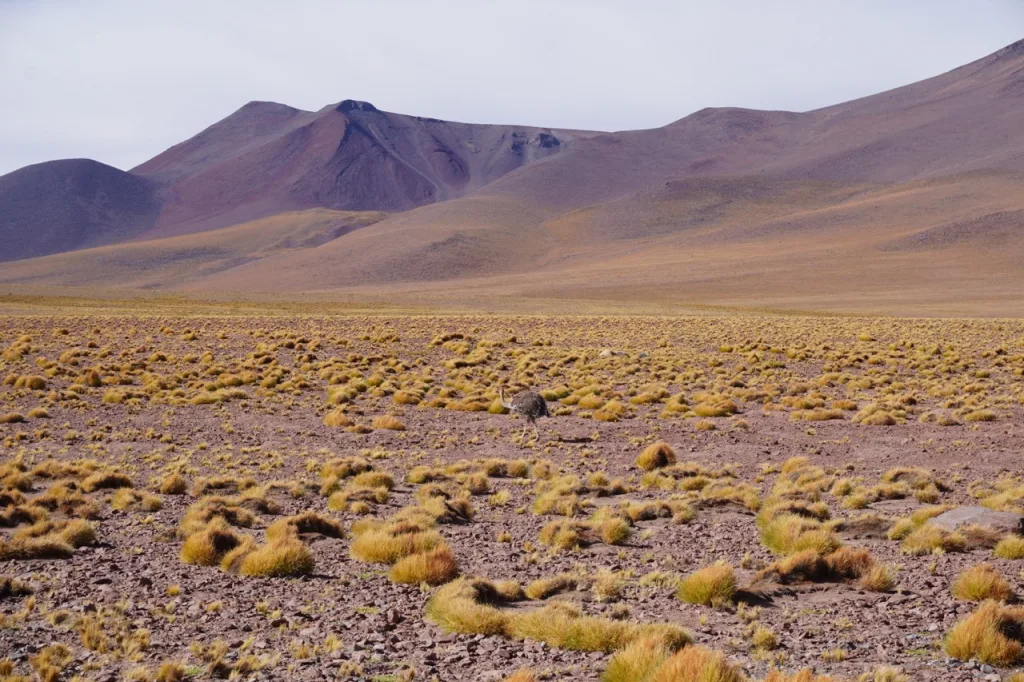
📍 Where to See: Open plains and desert valleys
🗓️ Best Time: Year-round
🍀 Difficulty: Medium
Think of Ñandú as the desert’s ostriches.
These flightless birds are found in open plains, sometimes running surprisingly fast!
They were high on my Atacama Desert wildlife bucket list, and I was only able to spot them once during the drive from San Pedro de Atacama to Calama.
How to see wildlife in the Atacama Desert?
A. Bring binoculars

Wildlife in the Atacama is incredibly abundant, but not always close by! I found that to be especially true for flamingos.
A small, affordable, and portable pair of binoculars can make the wildlife watching experience in the Atacama a lot better.
I always bring my Occer 12X25 binoculars on trips, and they served me incredibly well in the Atacama!
B. Drive around to the attractions

I consider a rental car to be an absolute must in the Atacama! I recommend renting a car in the airport in Calama and driving to San Pedro.
Though there are lots of tours in the region, the area is much more fun to explore at your own pace. Being able to stop when you see a bucket list animal is a must for wildlife enthusiasts like myself!
C. Be on the lookout for wildlife signs on the road
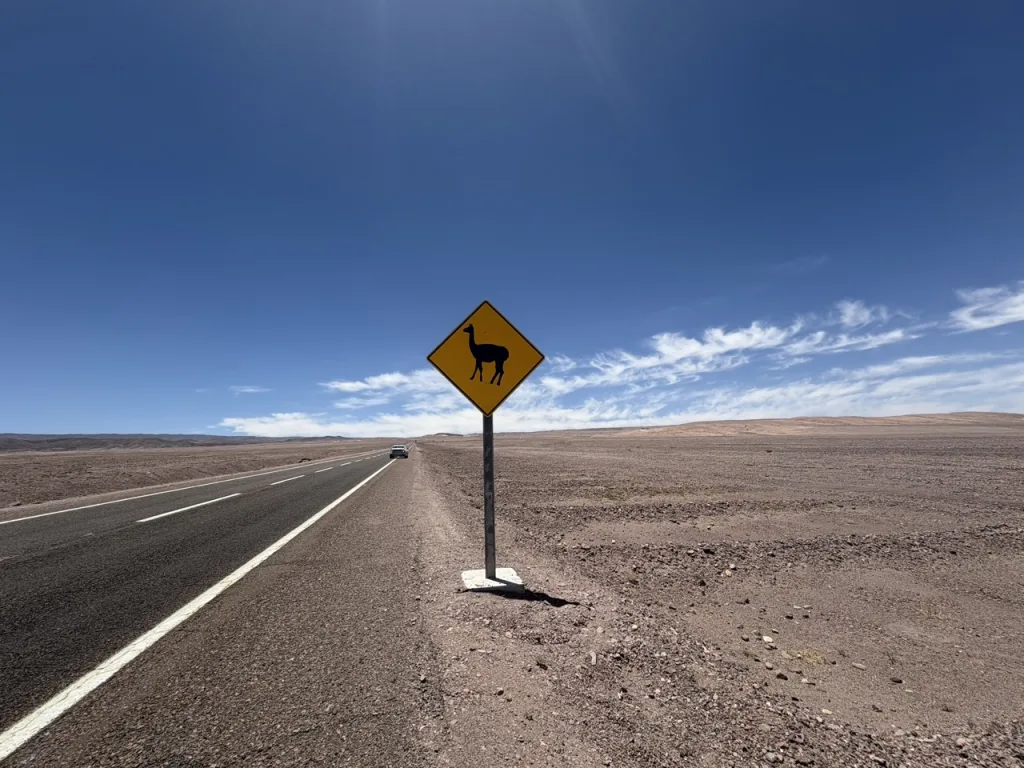
Throughout the Atacama you’ll see road signs picturing common Atacama Desert wildlife, such as guanacos, flamingos, and Ñandú.
Be alert when you see those signs, as they tend to be very accurate as to what animals you can see in the region!
The Wrapup: Atacama Desert Wildlife Watching Bucket List
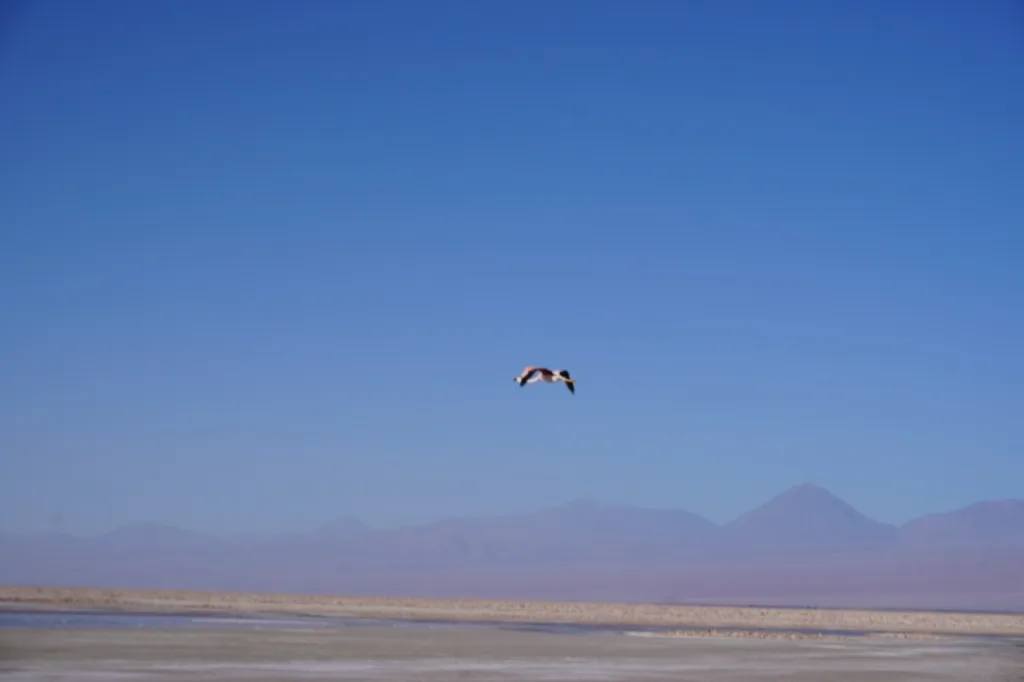
Despite the region’s reputation as dry and lifeless, the Atacama is actually filled with life.
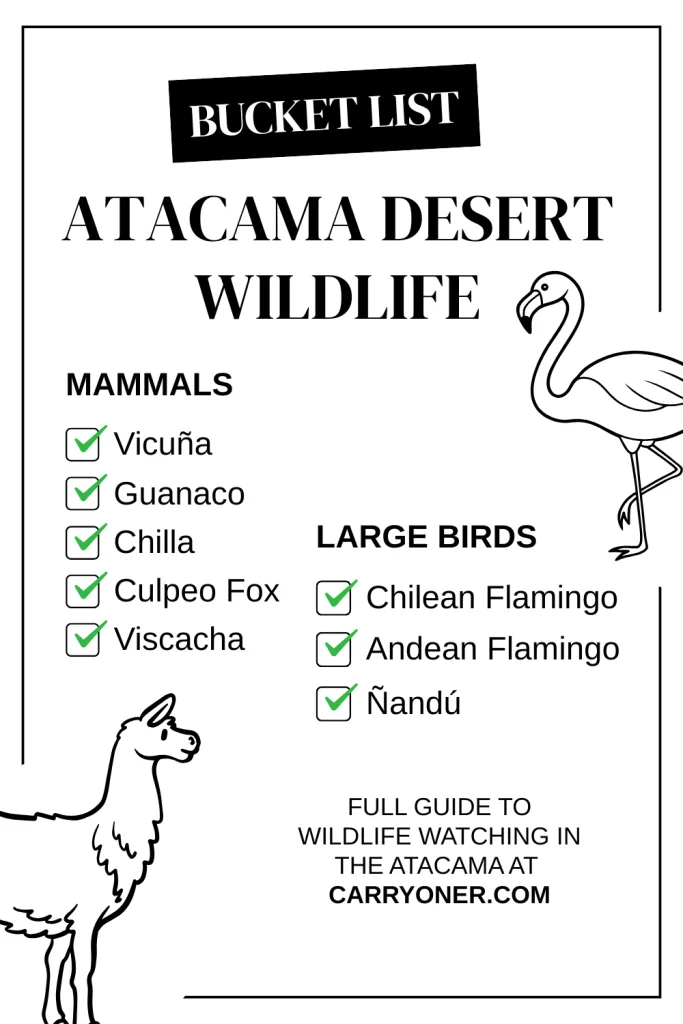
The animals of the Atacama Desert are some of the most resilient and unique creatures on Earth, and meeting them was one of my favorite experiences in South America.
Now that you have your Atacama Desert wildlife bucket list, grab a pair of binoculars, rent a car, and keep your eyes open.
Planning a trip to the Atacama? Check out our other helpful posts!
✅ Termas de PuriLibre: Swimming in the Atacama for Free
✅ Is the Whale Watching Tour from La Serena Worth It?
✅ 13 Best Destinations in South America to Inspire You!


